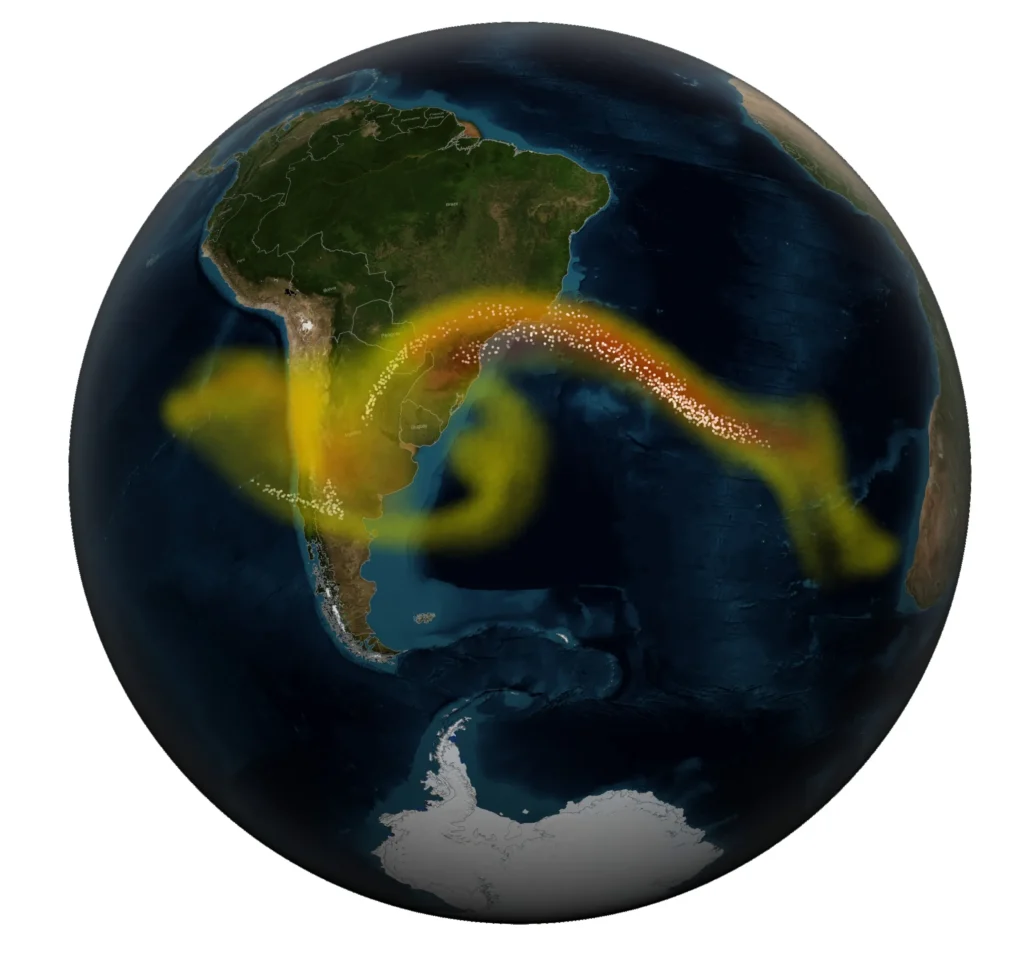
Introduction: Why Trees Might Save Lives
Volcanoes don’t erupt without warning. But catching those signals in time—especially when a volcano is buried deep in remote wilderness—is a massive challenge. Now, NASA and the Smithsonian Institution are turning their attention to something unexpected: trees. Yes, the leaves above us could be key to an early volcano warning system that saves thousands of lives.
Satellites, Trees, and Volcanic Gas: The New Connection
Volcanic eruptions are preceded by magma rising through the Earth’s crust. As it ascends, this magma releases gases, especially carbon dioxide (CO₂). Trees absorb this CO₂, causing their leaves to become greener and more vibrant. These changes are now visible through satellite images captured by NASA’s Landsat 8 and other Earth-observing instruments.
This discovery—trees turning greener due to volcanic gases—could add a powerful new layer to the early volcano warning system. Satellites can now detect these changes remotely, helping scientists monitor even the most inaccessible volcanoes.
Why Detecting CO₂ Matters
Sulfur dioxide (SO₂) has long been detectable from space and used to track volcanic activity. But CO₂ is even more important in the early stages. It’s one of the first gases released by rising magma. The problem? CO₂ is tricky to detect from orbit because Earth’s atmosphere already contains a lot of it.
That’s where vegetation comes in. Trees that absorb the extra CO₂ show measurable changes in their leaf color and reflectance. That difference—what scientists call a “proxy signal”—can be spotted using instruments onboard satellites like Landsat 8, ESA’s Sentinel-2, and NASA’s Terra.
Adding this method to the early volcano warning system could significantly improve eruption forecasting in CO₂-rich volcanic zones.
The Global Stakes: Who’s at Risk?
Roughly 10% of the global population lives in areas vulnerable to volcanic hazards. These include deadly threats such as lava bombs, toxic gas clouds, ashfall, and even tsunamis triggered by undersea eruptions.
For those living near volcanoes, the ability to predict eruptions even a few days earlier can be life-saving. In 2018, for example, early warnings helped evacuate 56,000 people before a major eruption at Mayon Volcano in the Philippines. No lives were lost, thanks in part to advanced gas monitoring systems. Now, imagine scaling that system globally—using satellites to detect signals from thousands of volcanoes in real time through an advanced early volcano warning system.
Teaming Up: NASA, Botanists, and Volcanologists Join Forces
To make this system work, scientists from multiple fields had to collaborate. Volcanologist Florian Schwandner at NASA’s Ames Research Center partnered with climate scientist Josh Fisher of Chapman University and volcanologist Robert Bogue of McGill University to explore how vegetation might signal volcanic activity.
Their goal? Find an indirect but reliable way to track CO₂ emissions from volcanoes—without physically trekking to dangerous locations. Trees became the answer and a vital component of the evolving early volcano warning system.
Ground Truth: How They Validated the Satellite Data
Satellite data only works if it reflects what’s really happening on the ground. So in March 2025, NASA and the Smithsonian conducted the Airborne Validation Unified Experiment: Land to Ocean (AVUELO). The mission flew over Costa Rica and Panama, using aircraft-mounted spectrometers to scan the colors of tree leaves near active volcanoes like Rincon de la Vieja.
Meanwhile, Fisher and his team gathered leaf samples and measured actual CO₂ levels in the field. Their findings confirmed the hypothesis: the greener trees were, in fact, absorbing more volcanic CO₂. This supports the credibility of incorporating tree-monitoring into the early volcano warning system.
The Role of Remote Sensing in Volcano Monitoring
Nicole Guinn, a volcanologist at the University of Houston, has been using this approach to track Mount Etna in Sicily. Her team’s analysis showed a direct correlation between changes in vegetation and volcanic CO₂ emissions.
This approach works best in forested volcano zones, which is both a strength and a limitation. While satellite detection is incredibly useful where trees are abundant, not all volcanoes have sufficient vegetation to support this method. Still, it’s a valuable addition to a multilayered early volcano warning system that already includes seismic activity and gas sensors.
The Limits and the Promise
Let’s be real: trees aren’t a perfect detection tool. Fires, droughts, diseases, or even seasonal changes can affect leaf color and skew satellite readings. And many volcanoes are in barren, treeless landscapes where this method simply doesn’t apply.
But in the right environments, tree-based monitoring adds an extra layer to the early volcano warning system. It complements seismic readings and ground deformation data, helping scientists get a more complete picture of what’s going on beneath the surface.
A Window Into Earth’s Future
Beyond eruption forecasting, this work is opening a new scientific frontier. As atmospheric CO₂ continues to climb, understanding how trees respond to these gases gives researchers insight into how Earth’s ecosystems may change. Volcanic environments offer a natural testbed for studying tree responses to high-CO₂ conditions—helping us understand not only eruptions, but also climate change impacts on forests.
Looking Ahead: Toward Smarter, Faster Warnings
NASA’s Landsat program, the European Sentinel satellites, and tools like the Orbiting Carbon Observatory 2 are all part of the future of volcano monitoring. Combining their data with field observations and machine learning could one day create a global network for eruption forecasting.
The goal isn’t to replace existing methods—but to make the early volcano warning system more comprehensive, faster, and smarter. As Schwandner put it, “There’s not one signal from volcanoes that’s a silver bullet. But this—tracking tree health from space—could be something that changes the game.”
Conclusion: A Greener Warning for a Red-Hot Threat
Nature leaves clues before disaster strikes. And now, thanks to satellite technology and interdisciplinary science, we’re getting better at reading them. Trees—those quiet, leafy sentinels—may soon be central players in our defense against volcanoes. By spotting changes from space before sulfur plumes rise or the ground shakes, we gain precious time to act.
The next generation of the early volcano warning system might not just hear the Earth rumble—it might watch the forests breathe.